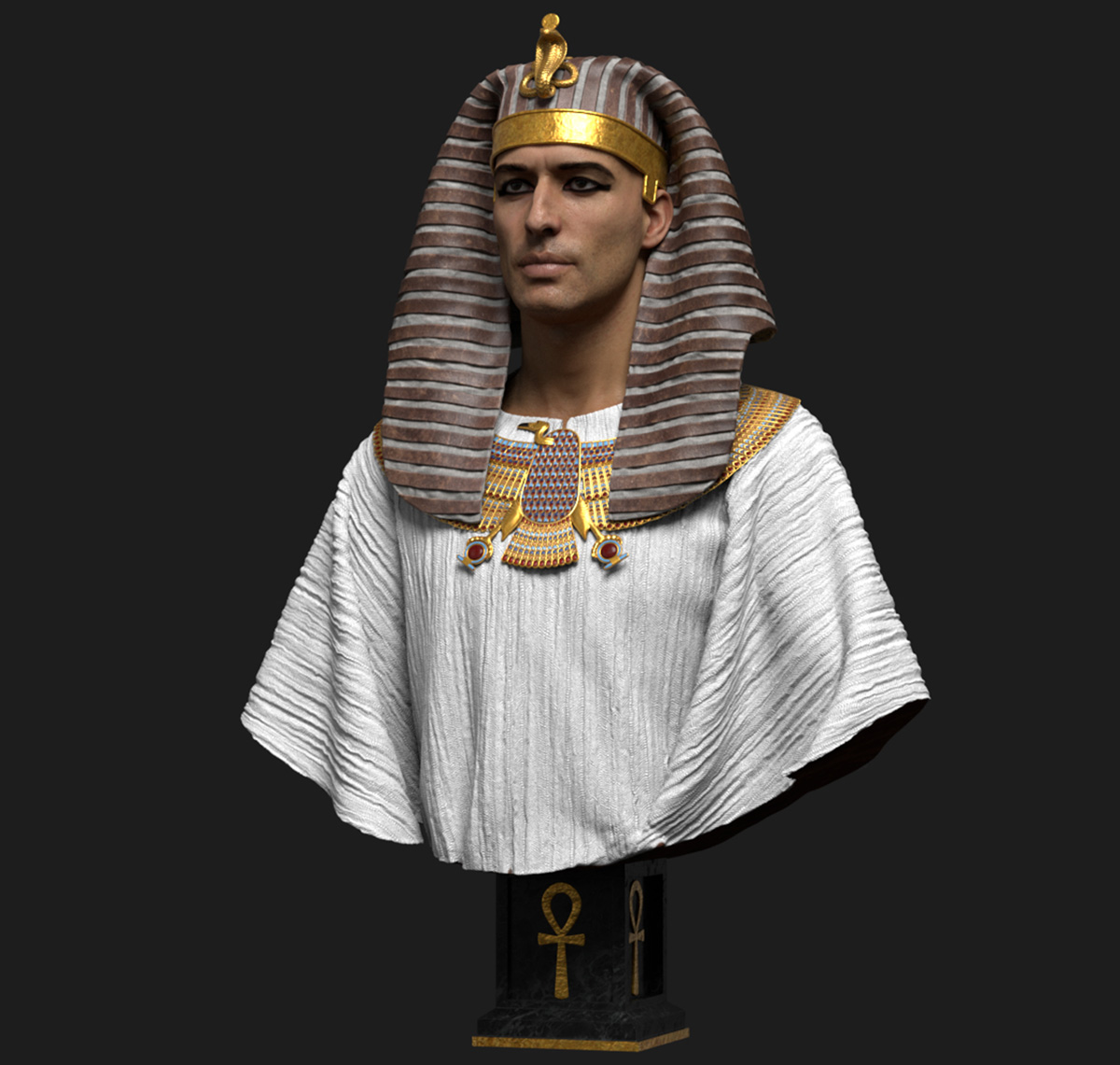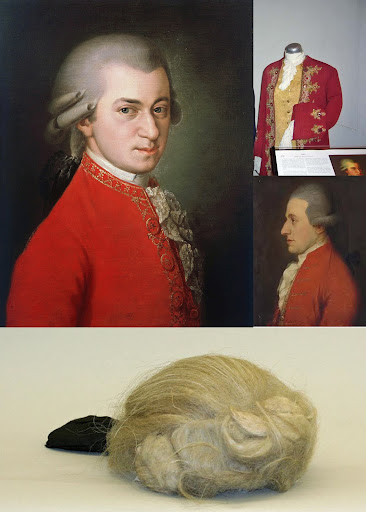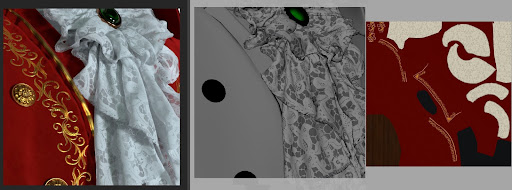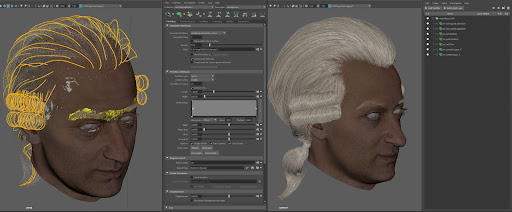Deniz Ozemre’s career began with nothing more than a PC and a passion for digital art. Today, he works on some of the biggest movies in the world. As if that isn’t cool enough, he also creates photorealistic busts of historical figures like Beethoven and Socrates.
We couldn’t resist catching up with Deniz to find out how his career got started, what his typical work day looks like, his workflow, and more. Read on for all this and insights into how Deniz makes his signature busts as historically accurate as possible.
TurboSquid: Can you tell us more about yourself and your career?
Deniz Ozemre: I’m a self-taught 3D artist from Turkey. I’ve had a nearly 20-year career and during this time I’ve worked on lots of games and movies from all over the world, most recently Thor: Love and Thunder with Gradient Effects. Right now I’m working as a remote 3D artist, doing personal projects for TurboSquid in my spare time.
My path into 3D was completely coincidental. When I bought my first PC, I didn’t even know how to use it. I didn’t buy it for visual art and I have no classical art background. Each day I casually installed software to see what it did and one of them was Amapi NURBS modeler. I was hooked. After two weeks, I was building basic models and before long I knew this was my chosen career.

What does a typical work day look like for you?
I start by thinking about the work that’s left over from the day before, like additions, fixes, and so on. After a strong cup of tea, I start to work through it all. Trying to work with a weary mind causes a lot of mistakes and can end in burnout. So to stop this from happening I take regular breaks for walking or daily activities to freshen my mind.
We love your historical busts – what made you focus on these for your work?
I have a bachelor’s degree in Classical Archeology and studied Greco-Roman art. I used my educational background to try out different anatomical studies and started to sculpt them digitally. My first was Hercules Farnese in 2008. Two years later I put it on TurboSquid and it started selling instantly. I was surprised and started to take it more seriously, adding sculptures with textures and proper topology. Eventually, I became fed up with doing bronze and marble objects and decided to make them look more lifelike. We’re all curious about what historical figures really looked like, so I thought it would be interesting.
Can you describe the workflow behind bringing a historical figure like Mozart or a statue like Michelangelo’s David to life in 3D?
I start by collecting references, paintings, depictions, and so on, doing some periodic cloth research, and reading about the look of the figure. For instance, it’s widely known from descriptions that Mozart was not a good-looking man, with brown eyes and smallpox on his face, but I wanted to be respectful to his memory with some artistic interpretation. After deciding on the age I want to depict, I start to sculpt the head with a predetermined pose. It can take a few tests to get the right proportions due to camera lens distortion differences between ZBrush and Maya.
When the head sculpt is finished, I prepare a low-resolution UV mesh for displacement projection. All the details are transferred to that and I continue with texturing. Due to the figure’s characteristics, ready-made textures can’t always offer the correct results so I have to hand paint and patch them individually in Photoshop by using a cavity map as my reference. Fine detailing for the shader is also important. The right amount of subsurface scattering, color saturation, specular strength, and light sources can vary under different lighting conditions. It’s also worth noting that dark eyes hide most errors and colored eyes need more attention when they work with speculars.
I tend to make hair with XGen Editor and after the grooming is finished it is converted to an interactive groom. That eliminates some complications with folder management in Maya. For eyelashes and eyebrows, I use my own library of ready-made assets.
The next step is blocking out a mesh for the cloth. For this, I get the camera angle and light set up ready. I make the cloth in ZBrush. I take advantage of cloth simulation software for certain parts of the model. For a clean output, those meshes need to be quadrified, UVed, and reprojected on high-res, then I’ll texture them for opacity, color, and displacement maps. For the lighting, I use one HDRI for the scene. This helps the dynamics of speculars much more than area lights.
What tools or software do you use to do this?
I always use common ones like ZBrush, Photoshop, and Maya.
How much preparation or research do you do beforehand?
For eye color, clothing, or hair, it always starts with an internet search to determine what looks best. For my Pharaoh, I had to find a movie in the depths of the internet and watch it for clothing style and headwear inspiration, figuring out how it curls, what it’s made of, and how it looks naturally. Even just a simple historic hat can take days of research. Preparation can become a long and tedious process of trial and error rather than simply building assets.
How long have you been using TurboSquid? What benefits does it bring you as an artist?
It’s been 12 years. TurboSquid is an open platform for all artists and helps them to be creative in every aspect, there’s no limitation. It keeps us integrated with the industry standards with newsletters and sales guidelines. You even get badges for organizing folders properly. It’s like school for 3D artists in some aspects. The help desk is also super responsive, they handle every question we ask.
What advice would you give new artists wanting to follow in your footsteps?
It may take a couple of years to find the field you like the most. Take your time and enjoy the process and the tools. You may start with modeling but end up coding. It’s a period of experience. After you find the path you feel comfortable with, then start to build technical and artistic discipline. In the future, ‘deadline’ will be the word you hear most. So build your artillery to handle that.
What makes you most excited about the future of the 3D industry?
I fully expect to see the implementation of AI with software. Software uses old technology from the end of the 80s, which keeps workflows clumsy. Render time, simulation, UVs, format conversions, and more are outdated and bloated. Even enhancing render outputs with the help of AI would be great. That would really help us to speed up the more tedious parts of the creative process. On a more fantastical note, with machine learning, we could use footage, studies, and diaries of Einstein to recreate a lecture by him and put it on screen. AI is rapidly heading in this direction.
If you’re an artist who is interested in being featured on the TurboSquid blog, email our content team at marketing@turbosquid.com.





